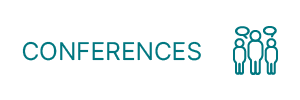The National Center for Earth and Space Science Education, in partnership with NanoRacks, invites communities across the U.S. to participate in the Student Spaceflight Experiments Program (SSEP) Fourth Flight Opportunity – SSEP Mission 2 to the International Space Station (ISS).
Each participating community will be provided all launch services to fly a real microgravity research mini-laboratory on ISS from September 28 to November 12, 2012, and a kit for assembly of their mini-lab. An eight-week experiment design competition in the community, held spring 2012, will allow grade 5-12 student teams to design real microgravity experiments vying for their community’s reserved mini-lab slot on ISS.
SSEP is a true STEM education program. It addresses a wide range of biological and physical science disciplines, including: seed germination; crystal growth; physiology of microorganisms and life cycles (e.g., bacteria); cell biology and growth; food studies; and studies of micro-aquatic life. Students design experiments to the technology and engineering constraints imposed by a real research mini-lab and flight operations to and from earth orbit.
Through the first two SSEP announcements of opportunity on the final flights of Space Shuttles Endeavour and Atlantis (STS-134 and STS-135), 27 communities joined the program, providing a combined 30,700 grade 5-14 students in 101 schools the opportunity to design and propose real spaceflight experiments; 1,027 student team proposals were received; and 27 experiments were selected and flown on the shuttles – one for each participating community.
For SSEP Mission 1 to ISS, the third flight opportunity, 12 communities are providing 41,200 students, across 92 schools, the opportunity to design and propose experiments. Mission 1 is ongoing.
The deadline to apply is February 27, 2012. More information is available here or contact Center Director and SSEP Program Creator Dr. Jeff Goldstein at (301) 395-0770 or jeffgoldstein@ncesse.org.



Leave A Comment